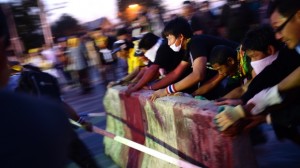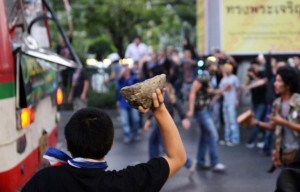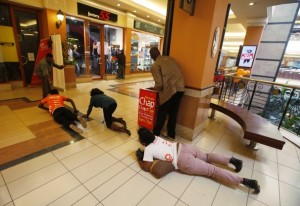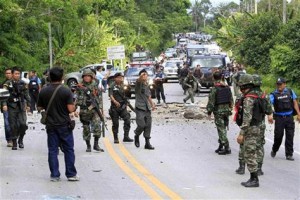Written by Mr. Itay Levin
It is a perfectly simple matter to explain the need for a change in the current approach to airport checks on passengers and the hand luggage they carry. A review of the attacks and attempted attacks in the last decade will lead us to the conclusion that the check made when a passenger goes from the check-in area to the departure gate does not provide an effective answer to the many and varied threats.
airport checks on passengers and the hand luggage they carry. A review of the attacks and attempted attacks in the last decade will lead us to the conclusion that the check made when a passenger goes from the check-in area to the departure gate does not provide an effective answer to the many and varied threats.
The security check is ineffective against the “target audience” it is intended for – it is irritating and burdensome for “innocent” passengers but does not provide a proper defense against terrorists.
We have to stress that the checking process is important but its implications for the flight process as a whole are highly significant:
- High financial outlay – The Airports Council International (ACI) reported an increase in airport security costs from 7% to up to 35% of the overall budget in a decade.
- Considerable waste of time – The check has become the most significant element of the total time spent at the airport. It has also led to aircraft spending more time on the ground and to a reduction in the number of movements each platform (aircraft) can perform or the airport can accommodate. Additional implications include missing connecting flights and more.
- Serious damage to passenger service – Passenger service indexes are in constant decline due to prolonged waits and time wasting, and in many cases security staff have no service awareness. A serious deterioration in the relationship between the consumer public and the authorities is a direct result of lack of public trust in the ability of the authorities to provide genuine security.
- Loss of potential profits – The prohibition on the sale or transportation of merchandise, the curtailment of free time at the airport, and other factors have led to huge losses for airport operators and airline companies.
Since the security check does not remove a considerable portion of the possibilities for attack, does not identify actual or potential hazards, and causes substantial damage to the industry it is supposed to serve, the question is why do we cling to this concept of security? Is there an alternative to the currently held view? Can better results be achieved by thinking afresh and developing new tools? Can we expect a better process in the future? And there are many other questions.
The industry served by the security procedures
Basic components of the world of aviation transport have not undergone any major changes for decades.
The platform has remained practically unchanged: The range, speed and capacity of aircraft have changed little. The threats have not led to the addition of any security measures, and most of the “classic” threats to aviation in the last 40 years are still there. As an exception we would mention the heightened threat level as a result of the possibility of using the dimension of cyberspace.
The infrastructure has practically not changed: The same terminals have been serving us for decades with only minimal changes and those built in the last few years have not changed in appearance. The dramatic changes in computerization and advanced communications have failed to make their mark on flight procedures and certainly not on the design of the infrastructure. Security measures that were initially implemented at the expense of passenger convenience and the commercial areas are freeing up some of the space and moving behind the scenes.
The service consumers have not changed: Flight has not become available to additional sectors of the population in the last two decades. The vast majority of the flying public has lost faith in the aviation security system and considers it a nuisance.
The service providers are divided among those airlines that have adapted to the creation of low-cost travel and those that remain stagnant in an attempt to survive in a clearly unprofitable industry. Airports which have traditionally been a business in which it has been difficult to lose money, have become less attractive for the most part. Some have even lost large sums due to the need to make vast direct investments in security and because of other indirect repercussions of the increasingly stringent security requirements after each attack.
The majority of airline companies are in desperation over the inability of the security establishment to stop attacks but their financial situation does not permit them to contribute towards security.
The adversary
The face of the adversary in the aviation sector changes every 15-20 years. If the sixties were the years of the Cuban revolutionaries and the seventies and eighties belonged to the Palestinians, in the nineties it was the turn of the “Afghanistan graduates” who gained notoriety principally through Al-Qaeda and the movements associated with it.
Is a new adversary going to appear in the next few years and what form will it take? That is the key question when we are trying to identify the adversary and the type of operation that will be its hallmark.
What effect the flow of information will have on groups and individuals worldwide is hard to predict, but it is certainly possible to set out general lines and trends in light of the “Arab Spring”, the slaughter in Oslo, and other events.
Threats and vulnerabilities
Many security measures are currently being deployed without first defining the threats that face them and the vulnerabilities with which they have to cope. The failure to define these parameters clearly leads to lack of focus, waste of resources, and inability to achieve the level required to perform the tasks derived from the ultimate goals.
Defining the high-level objectives in the following way will help put the focus on strengthening weak points:
1. Preventing the blowing up of a passenger plane and its passengers.
2. Preventing an attack on an area of population concentration with a passenger/cargo plane.
3. Preventing and/or thwarting the hijacking of a plane.
4. Preventing/thwarting a mass attack at an airport.
5. Preventing the killing of passengers and crew in flight with a non-conventional weapon.
6. Preventing/thwarting a deadly attack on an airport’s computer systems.
The threat relevant to each high-level objective is determined on the basis of a number of parameters taken into account by every airline and airport.
For example I will consider the prevention/thwarting of a hijack. In this example we will examine the onboard precautions and then the precautions on the ground. In order to hijack a plane today, it is necessary to take command of the aircraft controls.
We will first examine whether this can be done by a remote takeover of the aircraft’s computers. Next we will examine the durability of the cockpit door and wall against weight and time. To demonstrate this point, I would explain that a plane flying over land and able to land in a relatively short time and a plane over the ocean represent two completely different scenarios. The cockpit door is locked and bolted, but as strong as it may be it will in time yield to weight on it as with any door. Another key parameter is whether the air crew is trained and equipped to combat a threat (flight crew – security guards). Has an on-board system has been installed to help the flight crew neutralize any hijack attempt? The security guards capabilities must be examined, since here too there is obviously a certain threshold whereby even an armed and well-trained guard cannot overpower a large number of attackers, and if he surrenders then his weapons will be directed against the cockpit.
In contract to the precautions in place and the crew, the tools the attacker is likely to use must be examined. For example, will a simple weapon be able to force the cockpit? Is a loaded weapon suitable for achieving the purpose, and if so what type of weapon? Could a non-conventional weapon help an attacker successfully execute a hijack? Could a personal computer with a powerful transmitter take control of the aircraft’s systems? All these parameters will instruct us in the relevant reference threat for screening passengers and their hand luggage before they board the plane.
Risk management
Applying all the security precautions to every operation and implementing them at the highest sensitivity level is not the way to deal with the various threats. Risks have to be managed so as to allow the optimum level of activity for a reasonable risk. The risk level and probability must be determined by the governing body – the House of Representatives, the government, the President – and the ways and means by the regulator.
Summary
Designing the Checkpoint of the Future is essential in light of the ongoing failure of common sense and logic, economic considerations, and above all from an operative standpoint. The decision to protect human lives should apply to and be backed up by the proper action and tools to achieve that worthy end.
The knee-jerk reaction that has created endless “security solutions” to the dangers facing us is not the way to achieve the objective of effective security in the service of the aviation industry. All work done on the subject of the Checkpoint of the Future must look forward beyond the procedures currently employed.












